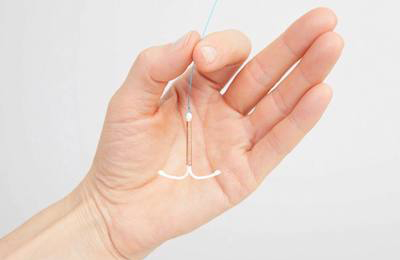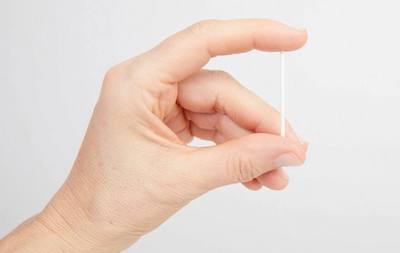Individual contraceptive advice
The product range of contraceptives is large. But not every contraceptive is suitable for everyone. For many women it is not easy to find the right contraception. In our practice you can get detailed advice on the different methods.
If you want to avoid taking the pill but are looking for long-term contraceptive protection, you can choose between different models of an IUD or the contraceptive rod (Implanon). Some of the intrauterine contraceptives (IUDs) provide safe contraception without hormones. We will inform you and help you decide.
If you are interested in a spiral insert, it is best to send us a messageso that we can clarify the further procedure directly.
Spirals

Gynefix copper chain
The Gynefix copper chain is a further development of the classic IUD and consists of a small flexible chain with 4 - 6 copper beads.
More info about the Gynefix copper chain
The copper bead ball forms itself into a spherical shape after insertion into the uterus.
More information about the
Copper bead ball
The classic copper coil consists of a small T- or anchor-shaped plastic body wrapped with a fine copper wire.
More information about the Copper IUD
Gold spiral - Gold-T - Gold-T mini
The gold spiral looks like the conventional copper T on the outside, but has a core of pure gold inside the copper wire winding.
More information about the Gold spiral
Hormone IUDs:
Mirena, Kyleena and Jaydess
The hormone IUDs contain the hormone progestogen and thus combine the effect of the IUD with that of the mini-pill.
More information about Hormone IUDs
Implanon - contraceptive sticks
The Implanon is a thin, soft plastic rod that is inserted as an implant on the inside of the upper arm just under the skin.
More information about the Implanon
Video: How do I find the right contraception?
For whom is the pill unsuitable and which alternative contraceptive methods are particularly recommended for young women?
A film clip with Dr. Deiters on Pill, IUD & Co. on STUGGI.TV
Download flyer
IUDs at a glance
After the IUD insertion: tips and recommendations
Pill & Co: Hormonal contraceptives
Hormonal contraceptives contain artificially produced hormones that have the same effect as the body's own hormones. Oestrogens and Progestogens correspond to the body's own hormones. Hormonal contraceptives are particularly safe. However, since they interfere with the hormonal cycle, side effects cannot be ruled out.
The first hormonal contraceptive came onto the German market as the "birth control pill" in the 1960s. Compared to today's pill, it had a high dosage and strong side effects. In the meantime, a lot has happened in the research and development of contraceptives. Modern hormonal contraceptives use a much lower dose, are better adapted to the female hormonal cycle and are generally well tolerated.
The market offers a wide range of hormonal contraceptives:







